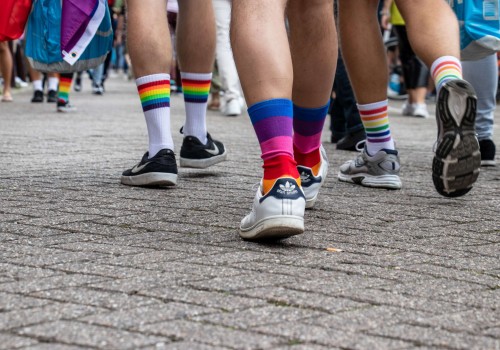Breaking down gender stereotypes to help prevent sexual violence


At a very early age, and often even before they see the light of day, society teaches children what it means to be a boy or a girl. This education, which is greatly influenced by gender stereotypes, is a powerful process that transforms the way young people see themselves, others, and the world.
What is a gender stereotype?
Gender stereotypes are preconceived notions about the personal characteristics of men and women.
They can relate to personality, interests, and activities, behaviors, physical appearance, role in society, and even sexual attraction. Some stereotypes have evolved over the years, with other models coming to the fore. However, many of these clichés remain and continue to influence us in subtle ways
Girls/Women |
Boys/Men |
|
|
The media's responsibility and impact on sexual violence
These clichés are proliferated and reinforced in advertising, music, TV shows, films, video games, social media, pornography and through our peers, schools, and families. Contrary to what most people think, these differences are neither innate (present from birth) nor natural. Above all, they are integrated and reproduced.
It is therefore not surprising that 90% of victims of sexual assault are girls or women, and that the majority of the perpetrators of this violence are men. This issue also disproportionately affects sexual and gender minorities.
There are many factors behind the problem of sexual violence, and gender stereotyping is one of them!
Indeed, while it's certainly understandable to fall into these roles and embody many of these qualities, being limited to them is dangerous. Indeed, the fact that these norms are rigid, cutting girls off from their power and boys off from their feelings, is what prevents young people from developing all the necessary skills for healthy, egalitarian relationships.
Now, what can I do as a parent?
- Become aware of how gender stereotypes are reflected in your daily life and in your own stereotypical expectations, words, behaviors, and reactions.
- Be authentic and open with yourself about how you have experienced, and still experience, the pressure to conform to these stereotypes. This will create a space for more personal exchanges.
- Open up a frank discussion with your teenager to help them think critically about the media they consume: "Do you think what you see is real? And do you feel any pressure from your family, friends, or social media to behave in a certain way?"
- Ask your teen about your mistakes as a parent, and recognize that some of your behaviors have contributed to gender stereotypes.
- Not knowing where to start is normal since it's a complex and abstract subject, but trust your teen's ability to think! We can learn a lot from them!
- Don't assume preferences such as sexual orientation on the part of your teen or their friends, and beware of generalizing.
- Be a role model for your young people and expose them to people or characters who challenge gender stereotypes. Put them in contact with images or discourse that break with these norms.
- Remain supportive and show solidarity, since young people who challenge stereotypes are often more marginalized and stigmatized than those who conform. Listen to and validate their difficult emotions. Emphasize their strengths, qualities, uniqueness, and valuable contributions.
For more information on sexuality and gender issues, consult the Teen Support Resources (uqam.ca).
References (in French)
Exposito, J., Les stéréotypes de genre et les réseaux sociaux: une influence sur le développement identitaire à l’adolescence.
Revue québécoise de psychologie, Consentement sexuel ET adhésion à des stéréotypes de genre: UNE ÉTUDE AUPRÈS D’UN GROUPE DIVERSIFIÉ D’ADULTES ÉMERGENTS
Institut nationale de santé publique du Québec, Statistiques sur les agressions sexuelles
Revue de l’Université de Moncton, Influence de la socialisation sexuelle hétéronormative sur la compréhension du consentement et de la violence à caractère sexuel des étudiantes et des étudiants en Acadie du Nouveau-Brunswick
Revue française de pédagogie, Socialisation de genre et construction des identités sexuées: Contextes sociétal et scientifique, acquis de la recherche et implications pratiques








